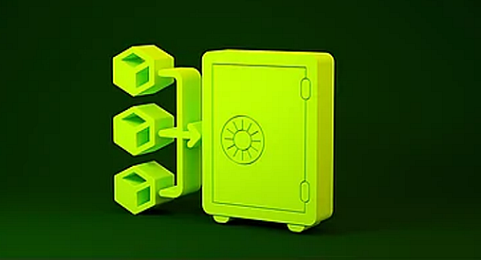Accredited InvestorsAltcoinAnatoli UnitskyAnti-Money Laundering (AML) In CryptoAPIArbitrageArtCoin TokenArticle DirectoryASICAuction Terminology GlossaryBasics of Stock Market InvestingBear MarketBest Crypto Payment Provider In the WorldBitcoinBlockchainBlockchain ConfirmationBlockchain Consensus MechanismBlockchain ForkBlockchain GlossaryBored Ape Yacht ClubBuild a Business That OutperformsBull MarketBuying SkyWay SharesByzantine Fault Tolerance (BFT) ExplainedCasascius CoinCentral Bank Digital Currency (CBDC)Centralized Crypto ExchangeCoinCoinsetCold WalletCollateralCommodity Futures Trading Commission (CFTC)Cross-Chain TechnologyCRUCrypto ExchangeCrypto GlossaryCrypto JokesCrypto Terms to KnowCrypto TickerCryptocurrencyCryptographyCryptojackingCryptounit BlockchainCryptounit GlossaryCryptounit ProgramdApp (Decentralized Application)Dead CoinDecentralized Exchange (DEX)Decentralized Finance (DeFi)Difference Between Bitcoin and EthereumDifferent Ways of Investing MoneyDigital CurrencyDistributed LedgerDo Your Own Research (DYOR)Dollar Cost Averaging (DCA)Dow Jones Industrial Average (DJIA)EncryptionERC-20ERC-721EthereumEvoScentFear Of Missing Out (FOMO)Fear, Uncertainty and Doubt (FUD)Fiat MoneyFNT Fintech CompanyGenesis BlockGlobal Unit PayGlossary of Banking TermsGlossary of Business TermsGlossary of Financial TermsHalvingHODLHot WalletHow Do I Start InvestingHow Rich is Satoshi Nakamoto?How to Create a BlockchainHow to Find Private InvestorsHow to Get Into FintechHow to Program Smart ContractsI Am Thrilled to Be a Part of This Global ProjectInitial Coin Offering (ICO)Initial Public Offering (IPO)Initial Token Offering (ITO)Innovation Basalt TechnologyInnovative Transportation TechnologiesInternational Bank Account Number (IBAN)Investing in Gold Mining StocksInvesting in Gold MiningJagerJoy of Missing Out (JOMO)Know Your Customer (KYC)LedgerLiquidity in CryptocurrencyMaker and Taker Fees in Crypto TradingMarket Capitalization (Market Cap)Meme CoinMetal Credit CardMetaMaskMillenials Now Have Access to Generational WealthMy Best Investment EverNew Digital EvolutionNFT GlossaryOff-Chain TransactionsOn-Chain TransactionsOpen Edition NFTPeer-to-Peer (P2P)Personal Loan GlossaryProbably the Best STO on the MarketProof of Stake (PoS)Real Estate Glossary of TermsReal Estate Investing GlossaryRebase TokenSecurities and Exchange Commission (SEC)Security Token ExchangesSecurity Token Offering (STO)Soulbound Decentralized Identities for Security TokensSoulbound ID Launch by Stobox Proves a SuccessSoulbound TokensStoboxStock Market GlossaryTestimonialsTether Platform and Token (USDT)UnitEx ExchangeUnitsky String TechnologiesUNTBUSDUValidatorWe Started Investing When We Were 25What are Blue Chip NFT?What are Blue Chip Stocks?What are Crypto Assets?What are Crypto Smart Contracts?What are CryptoPunks NFT?What are Digital Assets?What are Digital Collectibles?What are Gas Fees?What are Gas Wars?What are Hashmasks?What are Non Fungible Tokens?What are Non-Sufficient Funds (NSF)?What are Soulbound Tokens (SBT)?What are Stablecoins in Crypto?What are Transactions Per Second (TPS)?What are Utility NFTs?What are Utility Tokens?What Does Burning Crypto Mean?What Does Diamond Hands Mean?What Does Paper Hands Mean?What Does To The Moon Mean?What Does WAGMI Mean?What Happened to Satoshi Nakamoto?What is a 51% Attack?What is a Baby Boomer?What is a Backlink?What is a Banner?What is a Barcode?What is a Bid-Ask Spread in Crypto?What is a Block in Blockchain?What is a Block Reward?What is a Blockchain Address?What is a Blockchain Node?What is a Blockchain Oracle?What is a Blog?What is a Bond?What is a Bot?What is a Broker?What is a Business Accelerator?What is a Cash Cow?What is a Commercial Bank?What is a Commodity?What is a Con?What is a Credit?What is a Credit Limit?What is a Credit Rating?What is a Crypto Airdrop?What is a Crypto Bridge?What is a Crypto Scam?What is a Crypto Token?What is a Crypto Wallet?What is a Crypto Whale?What is a Crypto Winter?What is a Cryptocurrency Public Ledger?What is a Cryptocurrency Roadmap?What is a DAO?What is a Dark Pool?What is a Day Trader?What is a Dead Cat Bounce?What is a Default?What is a Derivative?What is a Digital Credit Card?What is a Fiscal Quarter?What is a Fungible Token?What is a Governance Token?What is a Grace Period?What is a Hard Fork?What is a Hot Wallet?What is a Hybrid Blockchain?What is a Hybrid PoW/PoS?What is a Joint Account?What is a Market Cap?What is a Merkle Tree in Blockchain?What is a Mining Farm?What is a Nonce? What is a PFP NFT?What is a POS System?What is a Prepaid Card?What is a Private Blockchain?What is a Private Key?What is a Public Blockchain?What is a Public Key?What is a Reserve Currency?What is a Ring Signature?What is a Routing Number?What is a Rug Pull in Crypto?What is a Safe Deposit Box?What is a Satoshi?What is a Security Token?What is a Seed Phrase?What is a Shitcoin?What is a Sidechain?What is a Soft Fork?What is a Spot Market?What is a State Bank?What is a SWIFT Code?What is a Tax Identification Number (TIN)?What is a Time Deposit?What is a Transaction Account?What is a Variable Interest Rate?What is a Virtual Assistant (VA)?What is a Virtual Card?What is a Virtual Currency?What is a Visa Card?What is a Whitelist in Crypto?What is a Whitepaper?What is Accounts Payable (AP)?What is AMA in Crypto?What is Amortization?What is an Accrual?What is an ACH Transfer?What is an Actuary?What is an Addendum?What is an Algorithm?What is an Angel Investor?What is an Annuity?What is an Asset?What is an ATM?What is an Atomic Swap?What is an Audit?What is an Avatar?What is an EIN?What is an Embargo?What is an Entrepreneur?What is an IDO (Initial Dex Offering)?What is an Interest Rate?What is an Internet cookie?What is an Investment Bank?What is an NFT Drop?What is an NFT Floor Price?What is an Ommer Block?What is an Orphan Block?What is an Outstanding Check?What is an Overdraft?What is Artificial Intelligence (AI)?What is B2B (Business-to-Business)?What is B2G (Business-to-Government)?What is Bartering?What is Bitcoin Dominance?What is Bitcoin Pizza Day?What is Blockchain Immutability?What is Blockchain Used For?What is BRICS?What is Business-to-Consumer (B2C)?What is C2C (Customer to Customer)?What is Capitalism?What is Catfishing?What is CFD Trading?What is Check Kiting?What is Cloud Mining?What is Communism?What is Content Marketing?What is Decentralization in Blockchain?What is DeFi in Crypto?What is Delisting?What is Depreciation?What is Digital Marketing?What is Diversification?What is Double Spending?What is Dumb Money?What is Dumping?What is Earnings Per Share (EPS)?What is Economics?What is Email Marketing?What is Equity?What is Etherscan?What is Fintech?What is Foreign currency?What is Forex?What is Fundamental Analysis (FA)?What is GameFi?What is Generative Art NFT?What is Gwei?What is Hard Currency?What is Hash Rate?What is Hashing in Blockchain?What is Inflation?What is Initial Game Offering (IGO)?What is Interest?What is Interest Income?What is Mainnet?What is Mastercard?What is Metaverse in Crypto?What is Mining in Cryptocurrency?What is Minting NFT?What is Mobile Banking?What is Money Laundering?What is NFT Alpha?What is NFT Metadata?What is NFT Rarity?What is NGMI Meaning?What is Nominal Interest Rate?What is Online Banking?What is Open-End Credit?What is OpenSea NFT Marketplace?What is Personal Identification Number (PIN)?What is Play-to-Earn?What is Polygon?What is Proof of Authority (PoA)?What is Proof of Work (PoW)?What is Public Key Cryptography?What is Pump and Dump?What is Quantum Computing?What is Refinancing?What is Retail Banking?What is Ripple?What is Sharding?What is Slippage in Crypto?What is Smart Money?What is Solvency?What is Soulbound ID?What is SSL?What is Staking in Cryptocurrency?What is Technical Analysis (TA)?What is Testnet?What is the Ask Price?What is the Better Business Bureau (BBB)?What is the Bid Price?What is the Dark Web?What is the InterPlanetary File System (IPFS)?What is the Gold Standard?What is the Lightning Network?What is the Prime Rate?What is the Sandbox?What is the Secondary Market?What is the World Bank?What is Tier 1 Capital?What is Tokenomics?What is TRC-20?What is Universal Banking?What is Unspent Transaction Output (UTXO)?What is Usury?What is Volatility in Crypto?What is Wash Trading?What is Web3?What is Whisper?What is XRP?What is Zero-Knowledge Proof (ZKP)?Who is Beeple?Who is Satoshi Nakamoto?Who is Vitalik Buterin?Why Tokenization is a Safe HavenWhy You Should Try Your Hand at Trading
What is a 51% Attack?
- Home
- Blockchain Glossary
- What is a 51% Attack?
Blockchain networks operate in a decentralized manner, which means that no single entity has control over the network. However, this decentralization also comes with some potential vulnerabilities.

One of the most significant threats to blockchain systems is the 51% attack.
What is a 51% Attack?
The 51% attack is a type of attack that occurs when a single entity or group of entities control more than 50% of the computing power on a blockchain network. This control allows the attacker to manipulate the network's transactions, potentially allowing them to double-spend or prevent other legitimate transactions from being processed.
A 51% attack works by allowing the attacker to rewrite the blockchain's transaction history. With control over the majority of the computing power on the network, the attacker can prevent new transactions from being added to the blockchain and can even reverse previously confirmed transactions. This ability to manipulate the blockchain's transaction history is what makes the 51% attack so dangerous.
How a 51% Attack Works
In order to comprehend a 51% attack, it is essential to understand how blockchains operate to record and validate transactions, and the security measures embedded in their architecture to prevent any tampering. A blockchain utilizes cryptographic techniques to connect subsequent blocks, which serve as a permanent record of all transactions that have occurred on the network. The blockchain employs one of two types of consensus mechanisms: proof-of-work (PoW) or proof-of-stake (PoS) to validate each transaction through its network of nodes.
In a PoW blockchain, nodes must solve complex mathematical puzzles to verify transactions and add them to the blockchain. In contrast, in a PoS blockchain, nodes must stake a certain amount of the native token to gain validator status. Regardless of the consensus mechanism, a 51% attack can be carried out by controlling the network's mining hash rate or by having command over more than 50% of the staked tokens.
To understand how a 51% attack works, consider a situation where more than 50% of the nodes responsible for validating transactions collude to introduce a different version of the blockchain or execute a denial-of-service (DOS) attack. A DOS attack is a type of 51% attack where the attacker disrupts the functioning of the remaining nodes, while they proceed to add new transactions to the blockchain or erase existing ones. In either scenario, the attacker can potentially reverse transactions and even double-spend the native cryptocurrency, which is akin to counterfeiting currency.
What a 51% Attack Means for Crypto Investors
Although a 51% attack is a rare occurrence, it is a serious concern for cryptocurrency investors. The primary risk associated with a 51% attack is the potential devaluation of a specific digital currency.
If a cryptocurrency experiences frequent 51% attacks, investors may lose confidence in the market, leading to a collapse in the cryptocurrency's price. However, there are limitations to what a miner who stages a 51% attack can achieve. For instance, the attacker would not be able to reverse transactions made by other people, alter the number of coins or tokens generated by a block, create new coins or tokens from nothing, or transact with coins or tokens that do not belong to them.
As a blockchain grows, it becomes increasingly challenging for rogue miners to launch a successful attack. Conversely, smaller networks may be more vulnerable to a 51% attack. To insulate themselves from the risk of a 51% attack, investors may opt to invest in larger and more established cryptocurrency networks rather than smaller ones.
Examples of 51% Attacks
Several high-profile 51% attacks have occurred over the years, including attacks on the Bitcoin Gold and Ethereum Classic networks. These attacks resulted in the loss of millions of dollars worth of cryptocurrencies and highlighted the need for increased security measures on blockchain networks.
Preventing 51% Attacks
Preventing 51% attacks requires a combination of technical solutions and community vigilance. One way to prevent 51% attacks is to increase the number of nodes on the network, which makes it more challenging for a single entity to gain control over the majority of the computing power. Other solutions include implementing consensus mechanisms that make it more difficult for attackers to manipulate the blockchain's transaction history.
Related Articles

What is a Public Blockchain?
Public blockchains are vulnerable to potential collision and 51% attacks due to the unknown identity of validators, while private...

What is Double Spending?
The 51% Attack is another type of Double Spending attack that is prevalent in small blockchains. In this type of attack, hackers take over 51% of the mining power of the blockchain, allowing them to...

What Is a Hybrid Blockchain?
Hybrid blockchain is immune to a 51% attack, which is a common attack on public blockchains. This means that hackers cannot gain access to the...

What is Proof of Authority (PoA)?
In PoA consensus, a 51% attack requires an attacker to gain control over 51% of network nodes, which is more challenging compared to a 51% attack in Proof-of-Work consensus where the attacker needs to...

Proof of Stake (PoS)
The 51% attack, long promoted as a threat to cryptocurrency enthusiasts, is a problem when PoS is utilized, but it is unlikely to materialize. A 51% attack under PoW occurs when...

Blockchain
Blockchain is often claimed to be "unhackable," but a 51% attack can compromise its security by giving a single party control over more than half of a blockchain's computing power. This enables the...
- Home
- Blockchain Glossary
- What is a 51% Attack?